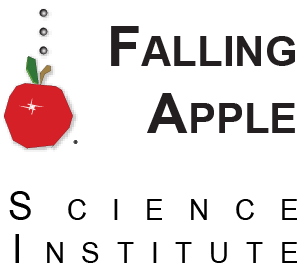"there is no conflict between teaching content and teaching method; only the union of the two gives the child what he needs. "
Science education provides a child with essential knowledge of the natural world and at the same time instills in him the proper method of thinking.There is a long-standing debate among educators about whether schools should focus on teaching content or teaching method.
We at Falling Apple Science believe there is no conflict between teaching content and teaching method; only the union of the two gives the child what he needs. Knowledge apart from method can be memorized but not understood. Method apart from subject matter is impossible—because to think is to think about something. Our approach to education recognizes that knowledge and thinking method are inseparable aspects of one goal: to impart understanding of the essential bodies of knowledge, and to thereby develop the child’s mind and prepare him for life.
We achieve this goal by presenting science as an integrated body of knowledge that is acquired by starting with observations and experiments and proceeding step-by-step to the proof of fundamental theories. In other words, we present the material inductively—by following the discovery processes of the scientists themselves.
There is a necessary logical order to the history of scientific discoveries. Nobody would claim that it is possible to understand calculus before grasping the principles of geometry and algebra. Similarly, one cannot develop modern genetics or immunology without chemistry, or understand modern chemistry without the atomic theory of matter, or prove the atomic theory without first grasping the basic principles of physics and scientific method. Each discovery was made possible by the previous discoveries. The history of science reveals the order in which the principles had to be learned, and therefore the order in which they should be taught.
When a student learns a fact of science without the evidence that supports it, his only recourse is to memorize it for the test. In contrast, the inductive approach gives the evidence that makes it possible to understand the ideas—and then science becomes an exciting and inspiring story of discovery, in which great thinkers triumph in their quest to grasp the nature of the universe.
Of course, there are a countless number of known facts about the natural world. So which of these should be selected for inclusion in the curriculum? Our approach is to first identify the essential theories that should be taught to high school students, and then adopt those theories as the standard for selecting the earlier material. In our judgment, the scientific theories that an educated adult needs to understand are: the heliocentric theory of the solar system, Newtonian mechanics, electromagnetism, the atomic theory of matter, and the theory of evolution. The study of these five theories comprise the last five years of our curriculum. The earlier material is selected to provide the necessary foundation that will prepare the student for understanding these theories.
In our program, mathematics is naturally integrated with science. For example, when students are introduced to geometry, they will be shown how Aristarchus used this branch of mathematics to determine the distance to the moon and its size. When students are introduced to trigonometry, they will see how Kepler used this branch of mathematics to understand the solar system. When they come to analytic geometry—i.e., the integration of geometry and algebra—they will see how this achievement opened the door to modern physics.
Mathematics is essential to understanding the physical world, and in our curriculum it is given the priority that it deserves.
